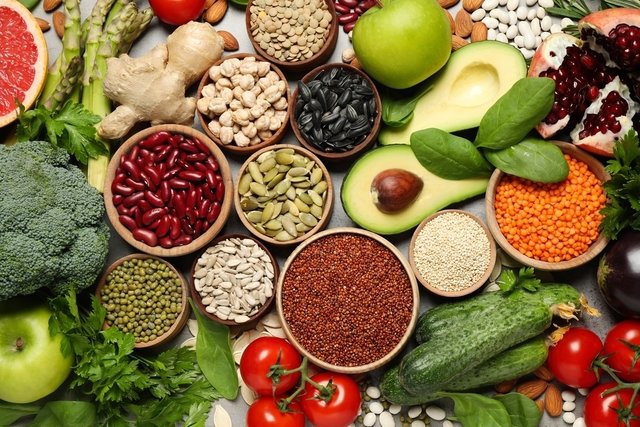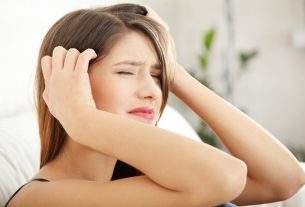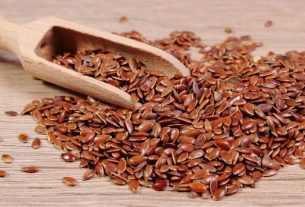The detox diet is a very popular option for those who want to lose weight, because it helps eliminate excess body fluid, causing you to lose weight. This diet can also be used to recover the body after prolonged use of medication or after overeating, such as during Christmas, Carnival or Holy Week, for example.
It is a diet program divided into 3 phases where foods containing gluten, lactose and foods containing pesticides are removed from the diet, as well as fast food and processed products, such as ice cream or soft drinks, which are rich in sugar, fat and chemical additives. .
During the detox diet, there is a greater intake of fruits, vegetables and legumes, which are rich in fiber, antioxidants and minerals that strengthen the immune system and contribute to well-being, good quality of sleep, in addition to helping to prevent diseases. such as obesity and diabetes. See other benefits of detoxifying the body.

Is a detox diet bad?
As it is a diet that prioritizes the intake of natural and healthy foods, in addition to reducing the consumption of foods rich in sugar and fat, such as soda, fried foods and fast food, the detox diet can help with weight loss and improve bowel function. and physical and mental disposition.
It is important to highlight that only a few studies prove the benefits of the detox diet. Furthermore, detoxification of the body already happens daily and is carried out naturally by the liver. Because this diet is very restricted, it can cause a deficiency of proteins, vitamins and minerals, leading to signs and symptoms such as weakness, hair loss and insomnia.
Therefore, when deciding to go on a diet to lose weight, it is always recommended to consult a nutritionist to assess your general health and nutritional needs, thus creating an individualized eating plan.
How to do the detox diet
To follow the detox diet, it is recommended to follow 3 phases:
Phase 1: Support phase
The first phase lasts between 7 and 14 days and consists of eliminating all compounds that are toxic to the body, such as foods with pesticides and chemical additives present in processed foods. This step can help eliminate toxins and strengthen the immune system.
At this stage, it is recommended to prioritize lean proteins, as well as nuts, vegetables, fruits and functional foods such as turmeric and flaxseed.
The foods that should be prioritized at this stage are:
- Fresh and organic fruitsmainly red fruits, orange, tangerine, papaya, lemon, mango and banana;
- Fresh and organic vegetablessuch as broccoli, cauliflower, pumpkin, arugula, kale and tomatoes;
- Gluten-free cerealssuch as amaranth, brown rice, buckwheat and quinoa;
- Organic legumessuch as beans, soybeans, chickpeas, lentils and peas;
- Lean proteinssuch as tofu, miso, tempeh, white fish, chicken and eggs;
- Healthy fatssuch as extra virgin olive oil, coconut oil, avocado, coconut, walnuts, cashew nuts, Brazil nuts, linseed, sesame, chia and pumpkin seeds;
- Herbs and spicessuch as turmeric, cinnamon, pepper, rosemary, thyme and mint;
- Natural drinkssuch as filtered water, coconut water and fruit juices.
At this stage, it is recommended to exclude foods with caffeine from your diet, such as green tea and coffee; inflammatory foods, such as alcoholic beverages and sugar; lactose, present in dairy products; foods with gluten, such as bread and pasta; processed foods, such as smoked meats, ice cream, pizza and canned goods; as well as fish and seafood with large amounts of mercury, such as shellfish, mackerel, sea bass and tuna.
It is also recommended to avoid drinks and food stored in plastic packaging, as they may contain bisphenol A, a toxic compound that is released when the material is degraded and can hinder the body’s detoxification.
In addition to food, it is important to avoid the use of other toxic ingredients, such as cigarettes and chemical products used for household cleaning, as they can also interfere with the body’s detoxification.
Example menu for phase 1
This menu is just an example of what you can eat in 3 days during phase 1 of the detox diet:
To help vary your diet during phase 1, watch the following video and learn how to make a detox soup with our nutritionist:
Phase 2: protection phase
Phase 2 of the detox diet can last from 7 to 14 days and is the phase in which the body eliminates more toxic waste through urine and feces. To help with this process, it is recommended to eat foods that protect and stimulate the proper functioning of the liver, such as garlic, black tea, green tea, cocoa powder, Brussels sprouts and onions.
The foods that should be prioritized at this stage are:
- Fresh and organic fruitsespecially grapes, pomegranates, oranges, apples, plums, lemons, apricots and cherries;
- Fresh and organic vegetablesmainly spinach, onion, garlic, leeks, spinach, watercress, carrots, alfalfa sprouts, cabbage, Brussels sprouts, cauliflower, broccoli, cucumber, lettuce, celery, peppers and tomatoes;
- Gluten-free cerealssuch as amaranth, brown rice, corn, buckwheat and quinoa;
- Organic legumessuch as adzuki beans, soybeans, chickpeas, lentils and peas;
- Lean proteinssuch as tofu, miso, tempeh, white fish, turkey, chicken, eggs;
- Healthy fatssuch as extra virgin olive oil, coconut oil, avocado, coconut, walnuts, cashew nuts, Brazil nuts, linseed, sesame, chia and pumpkin seeds;
- Herbs and spicessuch as turmeric, grain mustard, horseradish, cocoa, cinnamon, ginger, pepper, rosemary, thyme, mint;
- Natural drinkssuch as green tea, black tea, matcha, filtered water, coconut water and fruit juices.
As in phase 1, in this phase it is also important to avoid inflammatory foods, gluten, lactose, processed foods, and fish and seafood with large amounts of mercury.
Example menu for phase 2
This menu is just an example of what you can eat in 3 days during phase 2 of the detox diet:
See with our nutritionist a great detox juice option that can be included in your daily life and that helps improve metabolism and strengthen the immune system:
Phase 3: maintenance phase
From phase 3 onwards, it is important to gradually return to consuming the foods that were excluded during the detox diet, starting a balanced diet. Understand better how to have a balanced diet.
Foods with lactose, such as milk, cheese and yogurt, and gluten, such as bread and pasta, should gradually return to the diet so that the body becomes accustomed to these foods.
The foods that should be prioritized from now on are:
- Fresh fruitsuch as grapes, bananas, oranges, apples, plums, lemons, apricots and cherries;
- Fresh vegetablessuch as spinach, onion, garlic, leeks, spinach, watercress, carrots, alfalfa sprouts, cabbage, Brussels sprouts, cauliflower, broccoli, cucumber, lettuce, celery, peppers and tomatoes;
- Whole grainssuch as wholemeal bread, wholemeal pasta, brown rice and quinoa;
- Legumessuch as beans, soybeans, chickpeas, lentils and peas;
- Lean proteinssuch as lean beef, white fish, turkey, chicken, eggs;
- Healthy fatssuch as extra virgin olive oil, coconut oil, butter, walnuts, cashew nuts, Brazil nuts, linseed, sesame, chia and pumpkin seeds;
- Dairy, such as skimmed milk, unsweetened natural yogurt and white cheeses;
- Herbs and spicessuch as turmeric, grain mustard, horseradish, cocoa, cinnamon, ginger, pepper, rosemary, thyme, mint;
- Natural drinkssuch as herbal teas, filtered water and coconut water.
After the detox diet, to keep weight under control and help prevent diseases such as cancer, obesity and diabetes, it is important to maintain a balanced diet, avoiding the consumption of processed foods rich in sugar and fat, such as refined flours, smoked meats, ice cream, pizza, canned goods, refined vegetable oils, alcoholic beverages and fried foods.
Who shouldn’t do the detox diet
The detox diet is contraindicated for pregnant or breastfeeding women, as well as for children and adolescents, as they are in the growth and development phase. Likewise, the detox diet is not recommended for people with a history of anorexia, bulimia, binge eating or those who are underweight.
Furthermore, in the presence of diseases such as diabetes, hepatitis, cancer or cardiovascular diseases, the doctor responsible for the treatment should always be consulted before starting the detox diet.

Sign up for our newsletter and stay up to date with exclusive news
that can transform your routine!
Warning: Undefined array key "title" in /home/storelat/public_html/wp-content/plugins/link-whisper-premium/templates/frontend/related-posts.php on line 12
Warning: Undefined array key "title_tag" in /home/storelat/public_html/wp-content/plugins/link-whisper-premium/templates/frontend/related-posts.php on line 13



